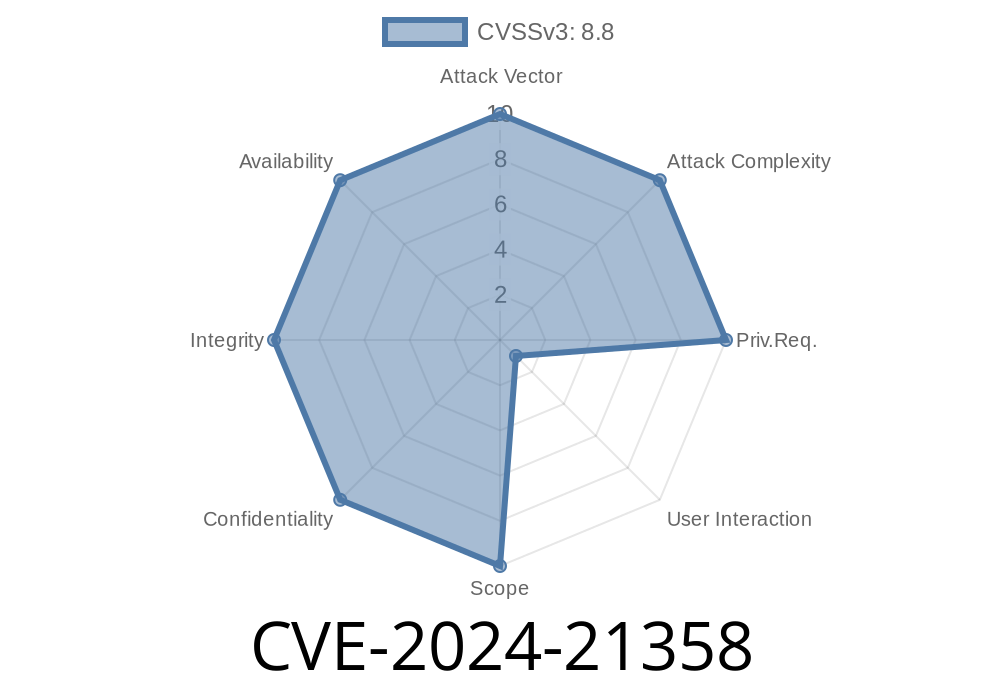In today's post, we are going to delve into an important vulnerability recently discovered in Microsoft Windows, specifically targeting the WDAC OLE DB Provider for SQL Server. The vulnerability, known as CVE-2024-21358, allows an attacker to remotely execute code on a victim's computer, potentially leading to data theft, unauthorized system access, and many more severe consequences.
Before we proceed, it's essential to understand what the WDAC OLE DB provider for SQL Server is. The WDAC (Windows Data Access Components) is a collection of components enabling Windows applications to access data stored in various data sources. The OLE DB provider is one of the key parts of WDAC that helps applications to interact with SQL Server databases.
In this post, we will discuss how the vulnerability works, provide code snippets demonstrating its exploitation, and direct you to the original references where you can learn more about the vulnerability and its implications.
The Vulnerability
The vulnerability exists due to improper handling of specific file types by the WDAC OLE DB provider. An attacker can craft a malicious file that, when processed by an application using the WDAC OLE DB provider, would lead to buffer overflow and eventually result in remote code execution.
Exploit Details
In order to carry out the exploit, the attacker would likely use a specially crafted SQL query that takes advantage of the buffer overflow vulnerability. The malicious query would look like this:
SELECT * FROM OPENROWSET('Microsoft.ACE.OLEDB.16.', 'MyMDBFilePath', 'SELECT MyMaliciousField FROM MyMaliciousTable');
The actual malicious content would be in the MyMaliciousField field, which contains a string that is too long and causes a buffer overflow when processed by the target system. This carefully crafted string can contain shellcode that would be executed on the victim's computer.
Please note that the example provided above is only for illustration purposes, and you should not attempt to use it on any systems without the proper authorization.
To be successful, an attacker would likely need to deliver the malicious file to the victim's system and convince the victim to open the file using an application that utilizes the WDAC OLE DB provider for SQL Server.
Mitigation and Patching
A patch has been released by Microsoft to address this vulnerability, and it's essential to update your systems as soon as possible. The patch can be found by visiting the Microsoft Security Update Guide here.
Additionally, implementing proper security measures such as input validation on user-supplied data and segregation of sensitive data on your SQL Server can help protect your systems.
Conclusion
CVE-2024-21358 is a severe vulnerability that has the potential to cause disastrous consequences if exploited. It's crucial to keep your systems up-to-date and follow best security practices to better protect your organization. We hope this post has provided valuable insights and resources to help you better understand and mitigate the risks associated with this vulnerability.
Original References
- Microsoft Security Update Guide
- CVE Details Page
- WDAC OLE DB Provider for SQL Server Documentation
Timeline
Published on: 02/13/2024 18:15:52 UTC
Last modified on: 02/13/2024 18:22:58 UTC
